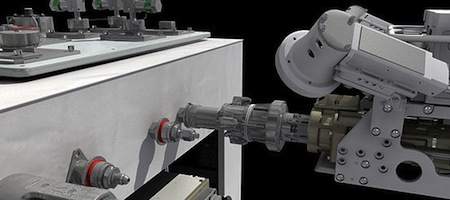NASA is conducting its first round of tests to develop robots capable of repairing and refueling satellites in space.

Thousands of satellites orbit our skies but only a couple of them are currently functioning; most of them have been left up there when they reach the end of their life. NASA’s Robotic Refuelling Mission (RRM) is set to test whether satellites in space can be refuelled and repaired using controls from the ground. It is hope that one day this technology will be used to improve the life-span of many of our communications satellites that are in orbit.
“Every satellite has a lifespan and eventual retirement date, determined by the reliability of its components and how much fuel it can carry,” says Benjamin Reed, deputy project manager at the Satellite Servicing Capabilities Office, (SSCO).
The test will take place over 5 days aboard the International Space Station. Controllers on the ground will remotely operate ‘Special Purpose Dexterous Manipulator’ or Dextre for short. Dextre will demonstrate the abilities of robots to do all sorts of servicing operations on satellites: snip wires, unscrew caps and even transfer simulated fuel.
NASA’s team hope that the tests could pave the way for servicing of satellites on the world’s busiest satellite super-highway: the Gyosynchronous Earth Orbit (GEO). The GEO is special because it is the only orbit to travel with the earth as it does a 24-hour rotation, making it particularly useful in tracking communications, television and weather data.
“The technologies we’re building to help rescue satellites in five years could be the very same ones used to clean up space ten years in the future or save a spacecraft on the way to Mars 30 years from now,” says Reed.
“NASA is acting today to ensure that we have the capabilities America needs for the future.”






